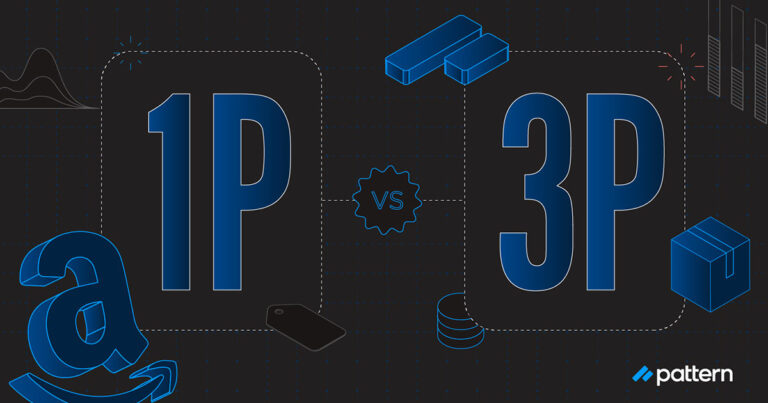Working in ecommerce can feel a lot like juggling five to ten objects of different shapes and sizes and hoping they don’t crash to the floor or into each other. Leading the ecommerce efforts for your brand is involved and exhausting, made more so because many brands’ ecommerce arms are woefully under-resourced.
Most brand executives only hire two to three ecommerce experts to run their business online, and it isn’t enough to keep up with everything your business needs to grow. Sound familiar? Ecommerce teams like yours are overworked and overwhelmed, and without proper support or resources you’ll never reach your true business potential. At best, you can keep your head above water and continue pushing off new initiatives and strategies, but at worst, a too thinly spread ecommerce team can turn into one big money pit for business.
Why Ecommerce Teams Are Overwhelmed
Ecommerce has evolved into a massive arm of business—ecommerce sales in Q3 of 2020 alone leaped to 37.1% year over year, showing how vital it is to the economic ecosystem. It’s the quickest way to reach consumers, wherever they are, with the biggest wins. It’s also evolved far beyond the scope most brands’ ecommerce teams are equipped to manage.
D2C Websites
Brands generally start with a D2C because it gives them greater control of the brand experience. It also makes up 3% of their overall revenue. D2Cs, however, can rapidly turn complex. You have to manage the retail platform you build your site on—i.e. Shopify, Magento, Google—or build a retail platform on your own. Then there are ancillary ecosystem modules you have to oversee and incorporate into your D2C, like your purchasing systems, your shipping logistics, your customer service infrastructure, and live chat provider. At a minimum, you’re looking at 18 different modules associated with your site that you have to build out and manage as an ecommerce team.
Once these things are built out on your D2C, you then have to drive traffic to your D2C. This requires creating and managing the digital arm supporting your brand—like Instagram and Facebook—working with SEO to drive traffic via search engine, overseeing paid advertising, and maybe even influencer marketing.
All of this is a tall order on its own for an ecommerce team, but D2Cs are only the tip of the ecommerce iceberg.
Marketplaces
Global marketplaces make up a six trillion-dollar industry—Amazon is three times the size of Shopify and Alibaba is 10 times the size of Shopify. Omni-channel marketplaces are the way for your brand to see serious and sustained growth, but they add several more obligations to the shoulders of your already overworked staff and amplify your brand’s main challenges.
With marketplace management, you’re looking at ad spend, SEO and keywords, product listings, MAP enforcement, and online control just to start. That doesn’t take into account additional responsibilities you’ll take on if you choose to sell your product on more than one marketplace. Frankly, even if you think you do, you don’t have the expertise and manpower on your own, across all of these channels, to manage all of them well.
International Sales
Going international adds an additional layer of challenges for your brand, because then you start dealing with obstacles like tariffs, export duties, different MAP laws, localization within each country, different images, and different packaging requirements. It gets spendy to have feet on the ground worldwide, but global ecommerce only continues to grow.
Combined, each of these areas of your ecommerce business are completely inundating your team. You have a higher potential of seeing disparate data across channels and marketplaces, making it harder to let the data guide your strategy. You have siloed expertise, where your team members might be well-versed in one thing like Instagram, but can’t possibly be well-versed in everything your ecommerce brand needs to grow, making it hard to scale. In almost every scenario, being under-resourced is the nail in the coffin for your ecommerce team.
The Executive Dilemma
All of these pressure points cause what we call the “executive dilemma.” This is when CEOs are forced to grapple with the question of whether or not they should invest in an ecommerce team that continues to need more resources and cost them more money. An under-resourced and overworked team gives them lower returns, even if it isn’t that team’s fault, and in order to make up for that, executives will pour additional money into agencies, temp workers, contractors, and software designed to make up for the competencies their ecommerce team is ill-equipped to provide on its own. This just eats into their profits and exacerbates the problem.
Pretty soon, CEOs are questioning if their ecommerce teams are actually any good or if they’re just a waste of their investment. When you’re doing your best to put out fires for your business, juggle everything you need to do, and still failing to meet your potential as a result, this response can be devastating.
The Solution
The most important thing you should do right now to address these pressure points is to communicate them to your brand executives. Make sure they know exactly what your ecommerce team needs to help the brand grow, and let them know there’s a better way of doing business: the Pattern way.
Pattern helps ecommerce teams just like yours eliminate pressure points so they can realize their full potential and focus on the strategic direction of their ecommerce business, instead of just cleaning up messes. With Pattern’s partnership, brands become self-sufficient and achieve long-term profitable growth, while allowing ecommerce professionals to grow and flourish.
Without Pattern, your business may go through 3-5 or more agencies to cover the work your ecommerce team can’t, paying thousands of dollars in fees each month in addition to costs for personnel, your D2C, marketplaces, and lost margins due to lack of control online.
At Pattern, we pay you—literally. We purchase your inventory from you and then arm you with every tool you need to dazzle on ecommerce, including invaluable data analysis about your conversion rates and listings, marketing and advertising resources, SEO, shipping and distribution logistics, and even international sales when you’re ready. We also help you get control of your brand online, so not only are you making money, but you’re saving it.
Our brand managers are devoted to the success of your brand, not how much they can make on commission or how much of your money they can spend. We work hand in hand with your ecommerce team to give you the support you need to not only thrive, but to reclaim the space and time your team needs in order to focus on doing what you love again.
To learn more about how Pattern can help your brand, set up your demo today.





